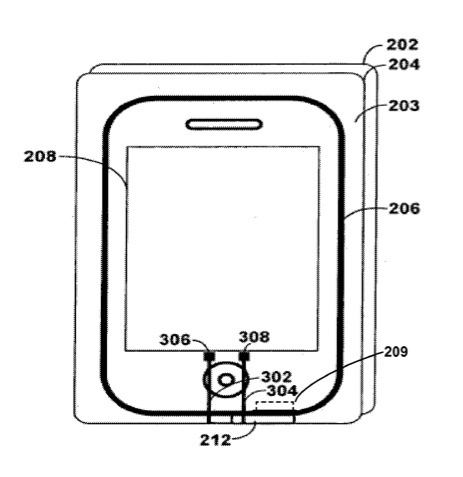Future Apple products may arrive fully charged. A patent (number 20120081213) for active electronic media device packaging shows that the company is working on packaging for supplying power, data, or both power and data to an electronic media device while the device is housed within the active packaging.
Per the patent, the active packaging may include one or more electrical traces in-molded or printed onto the packaging that couple to a suitable connector on the device. Power may also be provided via one or more wireless power techniques. Multiple active packages may be conductively stacked to transmit power, data, or both power and data to a row or stack or devices. POM sensors integrated with or attached to the device (or the active packaging itself) may detect various movement events. Coordinated and synchronized display effects may be presented while the devices are housed within the active packaging.
Here’s Apple’s background on the invention: “This invention relates generally to electronic media devices, and, more particularly, to active packaging for electronic media devices that allows power, data, or both power and data to be supplied to one or more electronic devices housed within the active packaging.
“Traditional packaging for an electronic media device includes plastic or cardboard containers and boxes that house the electronic media device. The outside of the container or box is typically printed with various labels, advertising, device specifications, and other useful information that allows the consumer to make an informed decision whether or not to purchase the electronic media device. For example, compatibility information, the hardware or software requirements of the electronic device, and information about accessories for the electronic media device may all be printed on the outside of the device packaging.
“The inside of the device packaging is typically designed to securely house the electronic media device. The main design consideration for the inside of electronic device packaging may be to prevent damage to the device during shipping, storage, or consumer handling. For example, styrofoam or polystyrene insulation or beads may be included within the packaging to help insulate the electronic media device from shock. Other protective measures, such as air cellular cushioning, polyethylene fabrication foams, and various forms of suspension or retention packaging, may also be used in some packaging designs. For example, a highly resilient, low-slip film may be used to encase the electronic media device (particularly portable electronic media devices) to prevent or reduce shock and vibration.
“Although typical packaging for an electronic media device may be designed to adequately protect the device from shock or damage, the packaging is extremely limited in other respects. For example, the ability to fully view or interact with the electronic media device while still inside the packaging is severely limited in most packaging designs. Although unobtrusive packaging designs have been developed, these designs typically do not allow the electronic media device to be interacted with while inside the packaging.
“In addition, typical packaging designs do not enable the electronic media device or devices housed within the packaging to present content (e.g., media content or advertising) while inside the packaging and without draining battery power. Other functionality, such as firmware or software upgrades, are also typically not available while the electronic media device is housed within the product packaging (e.g., at a retail location). This is primarily due to the inability to provide external power or data to the device while still housed within the packaging.”
The inventor is Michael Rosenblatt.

